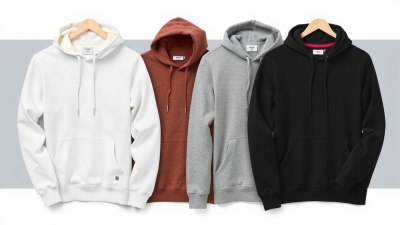The Emotional Toll of Overdressing for “a slight chill”
Explore the emotional impact of overdressing for a slight chill, navigating comfort and self-expression in fashion.

This image was created with the assistance of Freepik
As the seasons change and temperatures fluctuate, the way we dress must adapt to our surroundings. While many may relish in the opportunity to layer up, others find themselves grappling with the emotional toll of overdressing for what they might perceive as a slight chill. In today's fast-paced world, the outward expression of personal style often becomes intricately tied to our inner emotions. Fashion choices can reflect our mood, attitude, and even mental health. The choice to overdress for minor temperature changes can evoke feelings of discomfort, anxiety, and even self-doubt.
The crux of the issue lies in balancing comfort and style. When the weather commands a slight chill, the dilemma of how to dress becomes more complex. Some choose to layer up, anxious about being cold, while others opt for lighter clothing, hoping to embrace their personal aesthetic. The latter can sometimes lead to feelings of inadequacy or vulnerability, especially in social settings. The fear of not conforming to expected norms in clothing can heighten anxiety levels and lead to a pervasive sense of discomfort.
The Psychological Aspect of Overdressing
Psychologically, overdressing can often stem from a fear of judgment or an urgent desire to fit in. For many, clothing is a powerful medium of self-expression, yet it can also become a source of anxiety. When faced with a slight chill, individuals may question their choices: “Will I look ridiculous in all these layers?” or “What if others perceive me as overdramatic?” These thoughts can quickly become overwhelming, overshadowing the joy that clothing can bring. There’s a prevalent notion that one’s outward appearance can affect inner wellbeing, and this proves particularly true during the transitional seasons.
Moreover, there are social implications tied to dressing for the weather. In many cultures, how one dresses can serve as a marker of status, self-esteem, and even personality. To overdress can sometimes feel like a sign of weakness, making one overly cautious or overly affected by environmental changes. Balancing the desire to express oneself through fashion while catering to external weather conditions can lead to a form of emotional exhaustion, especially when compounded with the daily stresses of modern life.
The Struggle of Choice: Less is More
In an era where minimalism is often championed, the concept of overdressing for a slight chill presents a paradox. The ideal might suggest that fewer layers equate to a more refined style; yet, we frequently find ourselves swaddled in extra layers, battling the cold and our internal struggle simultaneously. This tension can be further exacerbated by peer pressure—those around us may be clad in lighter attire, and our inclination to follow suit can create a conflict between personal comfort and societal expectations.
This dichotomy extends beyond mere physical discomfort. Overdressing can became a metaphorical weight, burdening the individual with a sense of obligation to maintain appearances, even at the cost of their own comfort. Losing sight of one’s intention and aesthetic can lead to a disconnect between who we truly are and how we present ourselves to the world. The emotional toll culminates in the individual feeling trapped in a never-ending cycle of self-doubt and confusion.
Impact on Personal Identity
As individuals navigate their unique style journeys, overdressing can take on different implications. For some, it may signify a lack of confidence, while for others, it may highlight an innate desire to keep warmth and comfort at the forefront. Understanding this duality is essential in contextualizing the emotional baggage associated with increasing layers of clothing. It serves as a reminder that fashion is not solely about aesthetics; it encapsulates feelings of safety, security, and sometimes, even vulnerability.
The pressure to conform to prevailing fashion trends can often blur personal identity. Those who feel external pressure to dress a certain way may hide their true selves behind an array of fabrics. This discrepancy between self-image and outward expression reveals the profound emotional toll that overdressing can have. Regaining a sense of personal identity involves becoming cognizant of how societal expectations shape our choices and embracing the notion that individual comfort should always be prioritized.
Strategies for Emotional Wellbeing
To mitigate the emotional toll of overdressing for a slight chill, one might consider several strategies that facilitate a healthier relationship with clothing. Firstly, embracing the philosophy of personal styling can shift perspectives around dressing for the weather. Instead of merely succumbing to societal expectations, harnessing one’s intuition can lead to an empowering approach that prioritizes personal comfort and aesthetic preferences.
Moreover, crafting a wardrobe based on versatility can significantly ease the emotional burden. Selecting staple pieces that can be layered and adapted to varying temperatures fosters the ability to dress fluidly in accordance with one’s comfort levels. Additionally, acknowledging that fashion is a form of self-expression should compel wearers to embrace their unique interpretations of style, regardless of external opinions.
The Role of Self-Compassion
Practicing self-compassion is also critical in navigating the emotional implications of overdressing. Acknowledging the emotional turmoil that comes from feeling trapped in clothing choices allows individuals to address these feelings head-on. It’s essential to recognize that everyone experiences moments of uncertainty regarding their clothing and style, and giving oneself permission to feel discomfort can be liberating.
Furthermore, mindfulness practices can offer valuable insights into the emotional relationship with clothing. Taking a moment to check in with one’s body and feelings can illuminate deeper patterns that dictate dressing behavior. Engaging in reflective practices can foster an appreciation for the multifaceted nature of fashion and the emotions that accompany the choices we make.
The emotional toll of overdressing for a slight chill serves as a poignant reminder of the intersection between fashion and feelings. As we continue to navigate an ever-evolving societal landscape, finding comfort in our clothing lies at the heart of self-expression. Recognizing when we dress out of obligation and shifting toward an avenue of introspection can relieve the emotional strain that deciphers our encounters with clothing.
Ultimately, dressing should not feel like a burden. By equipping ourselves with the knowledge and tools to navigate emotional complexities surrounding clothing choices, we minimize guilt and shame and cultivate a nurturing relationship with ourselves. The right clothing can envelop us in warmth, both physically and emotionally, aligning our style with our authentic selves.











